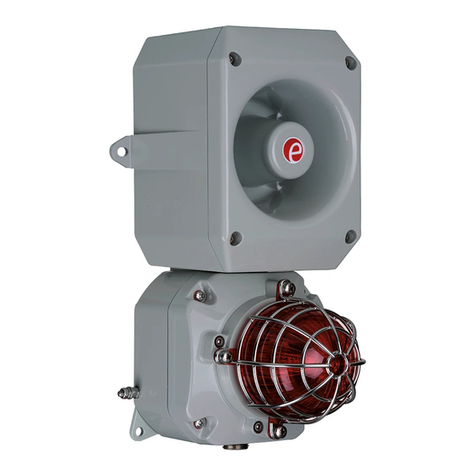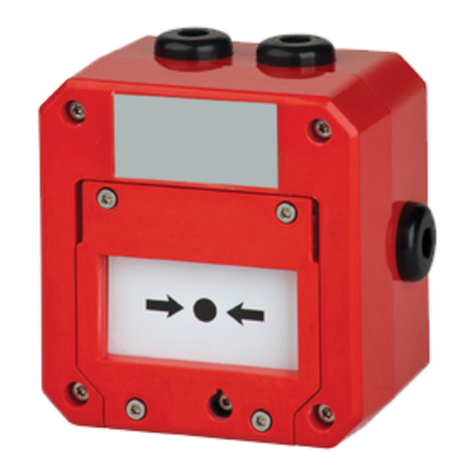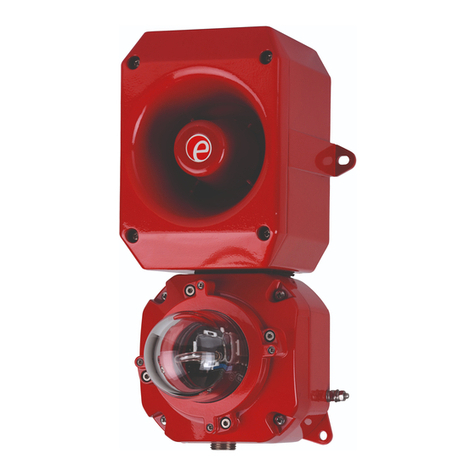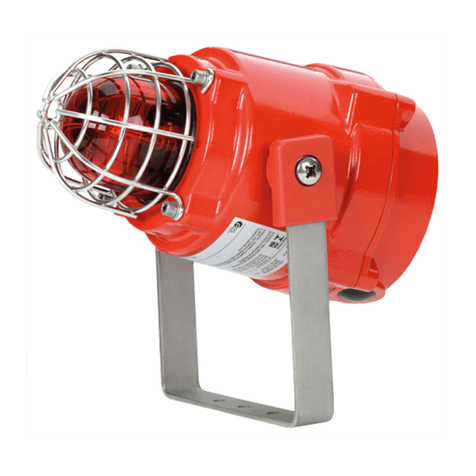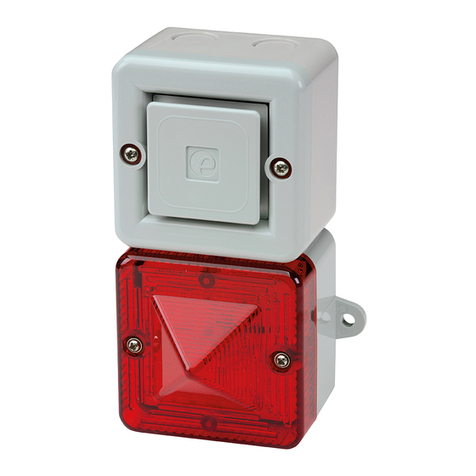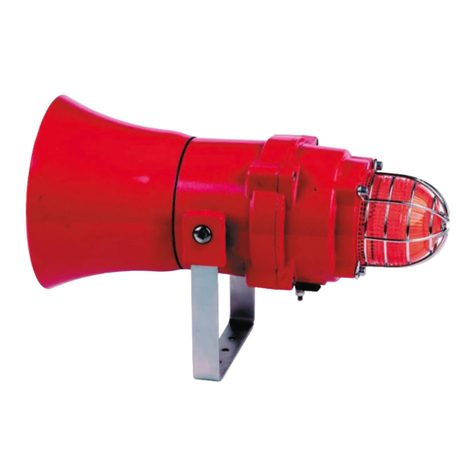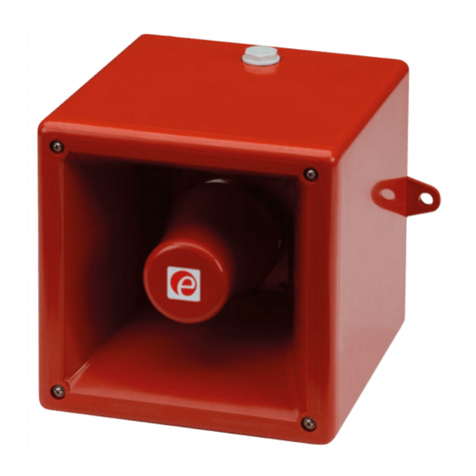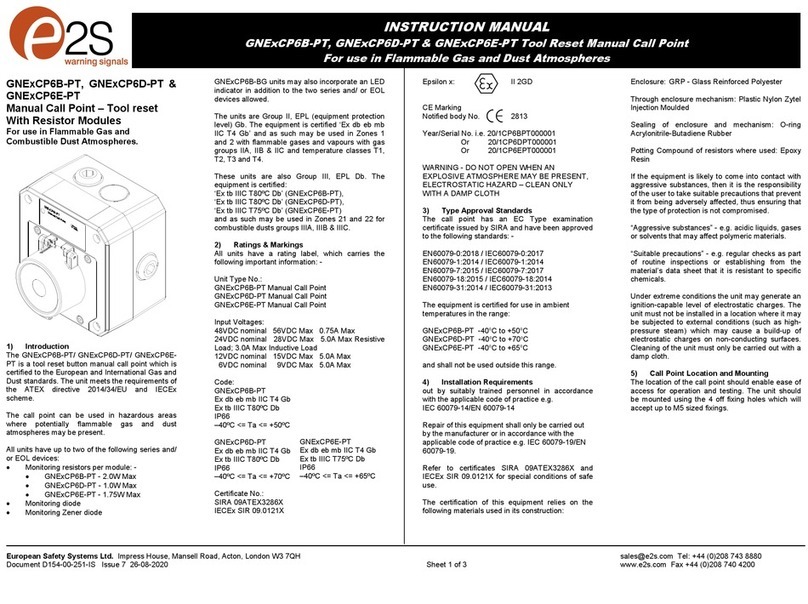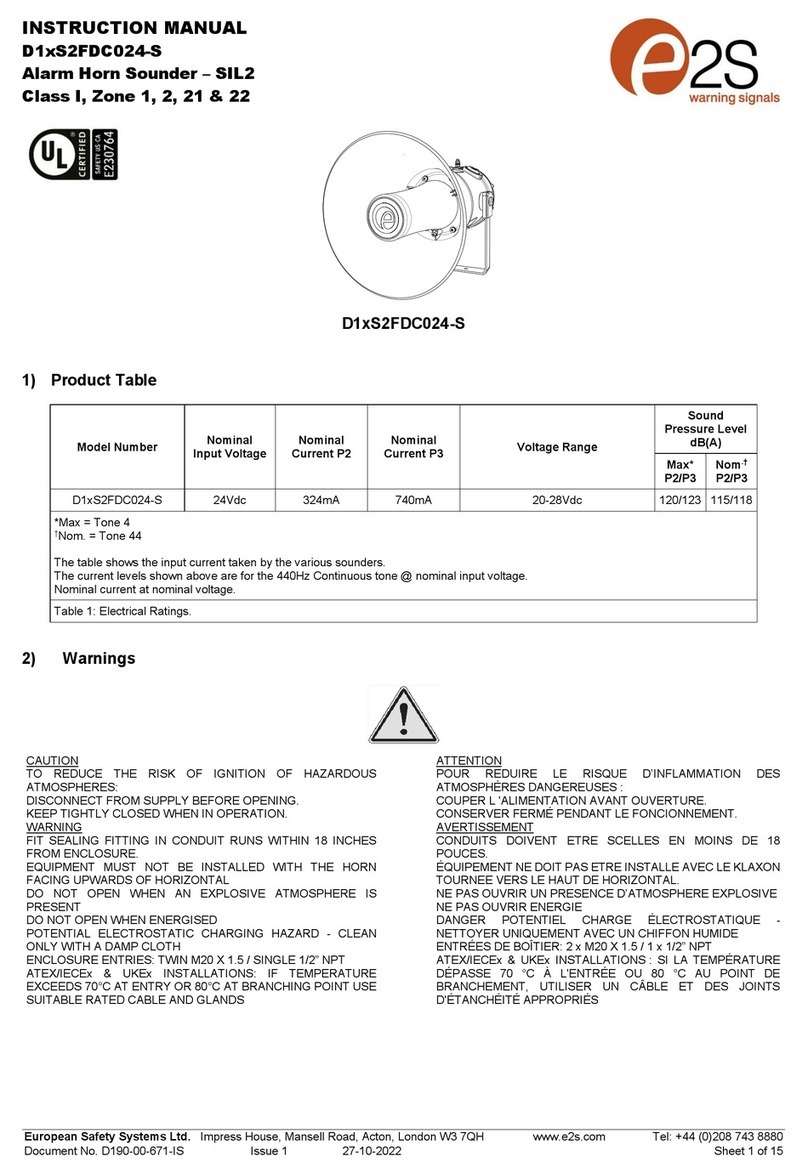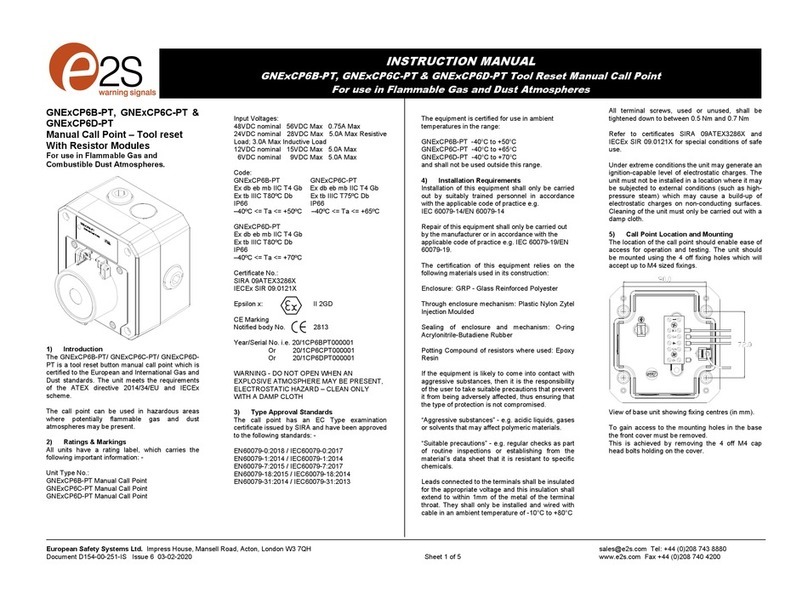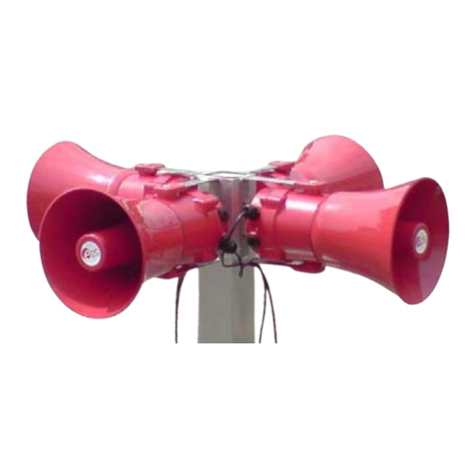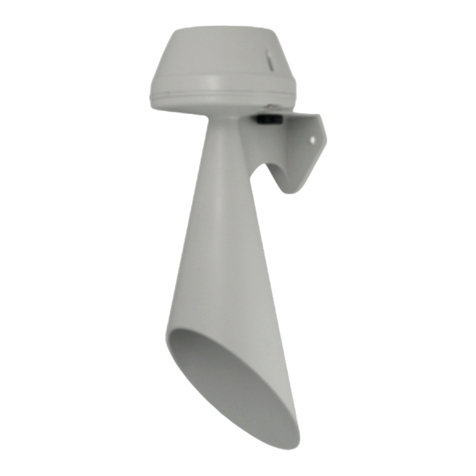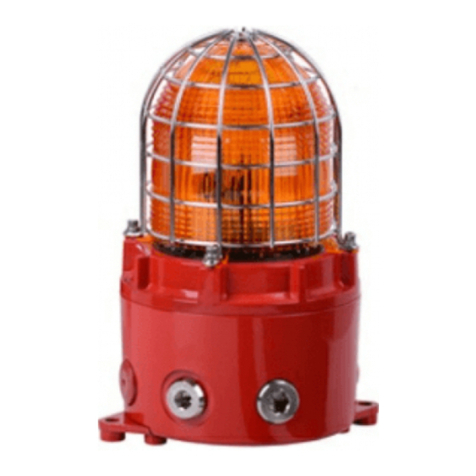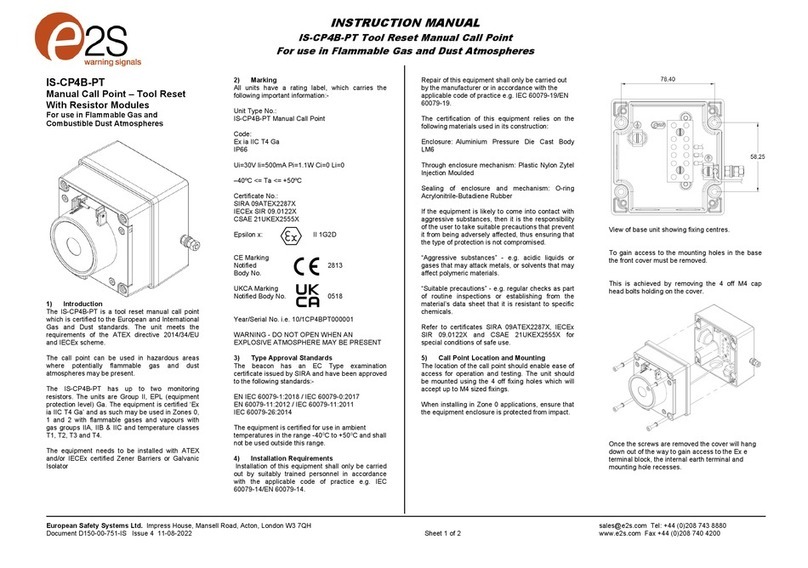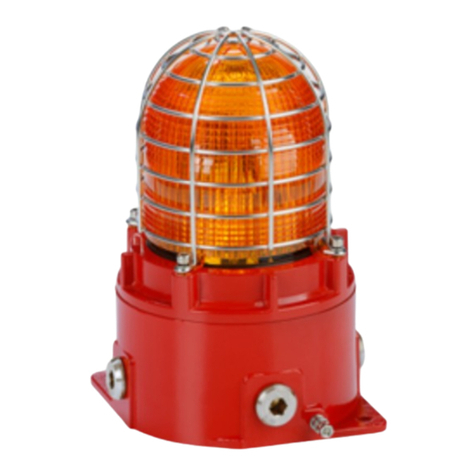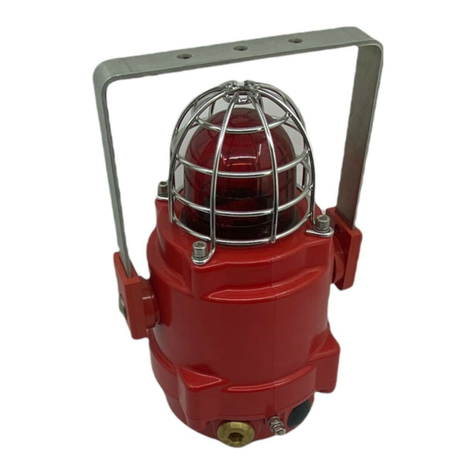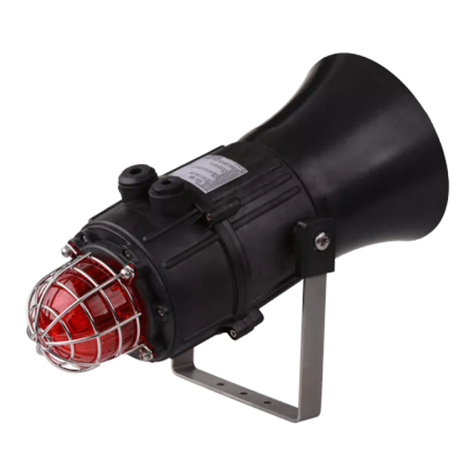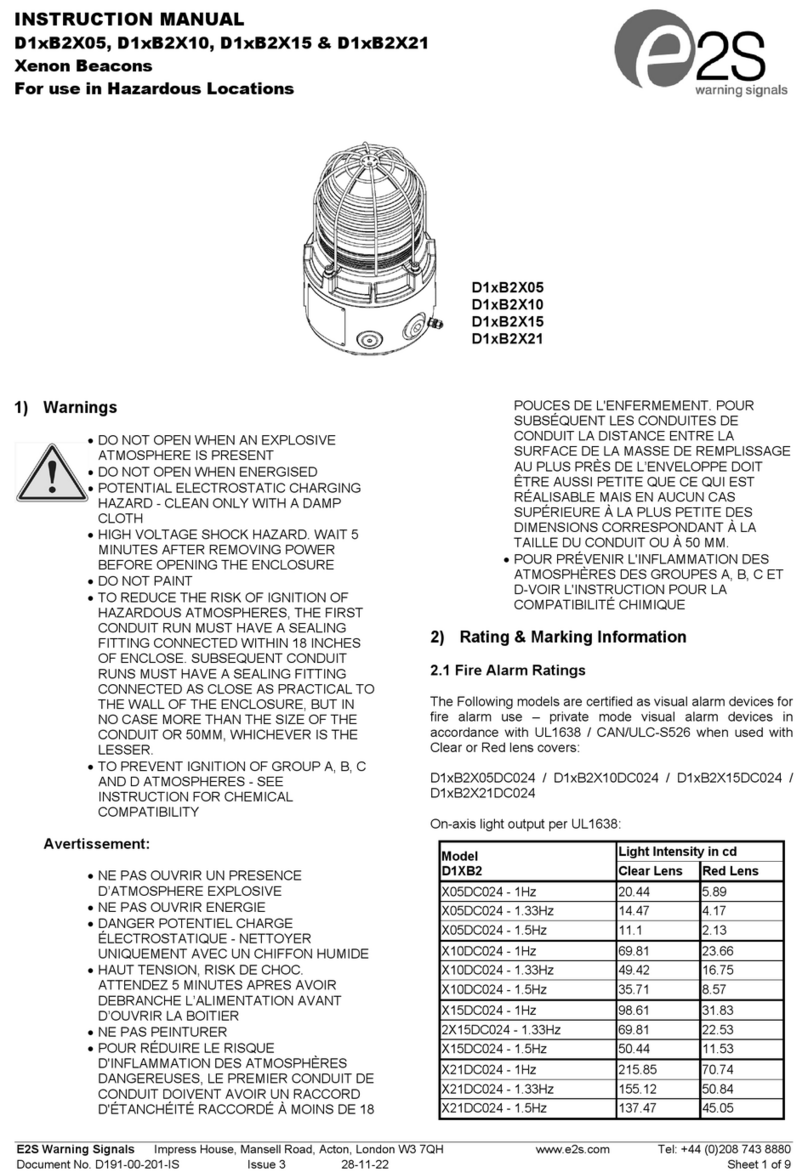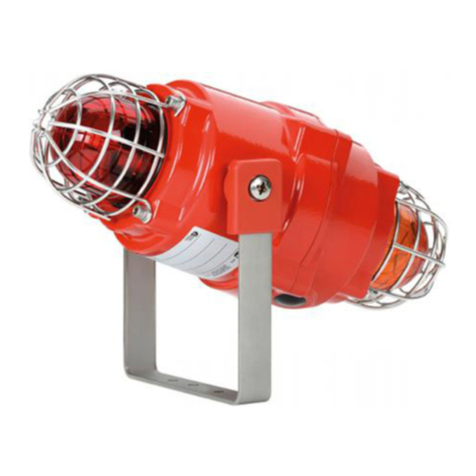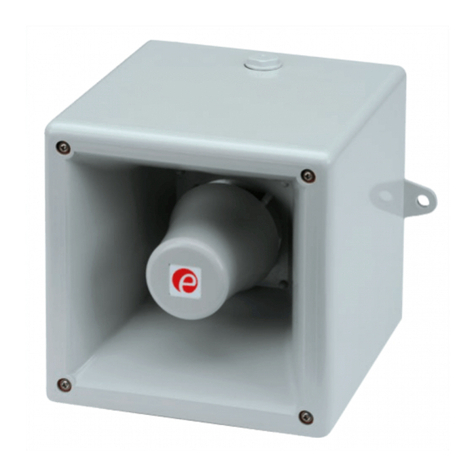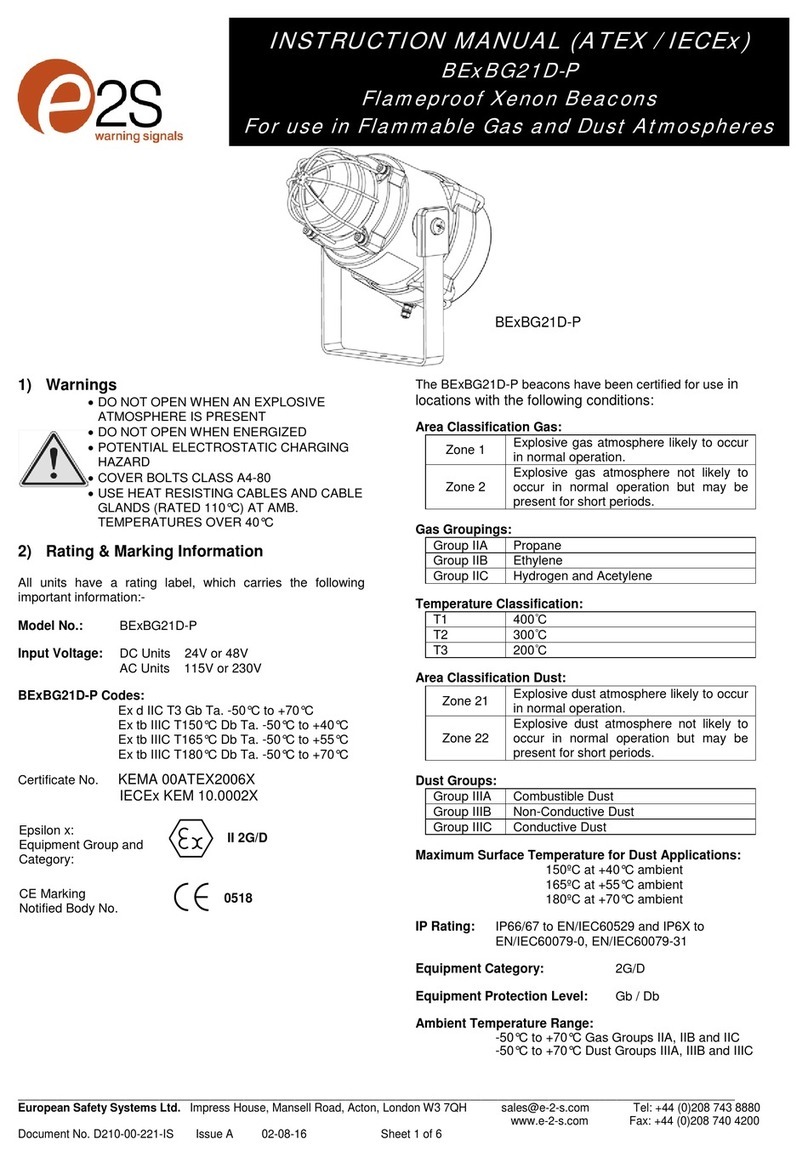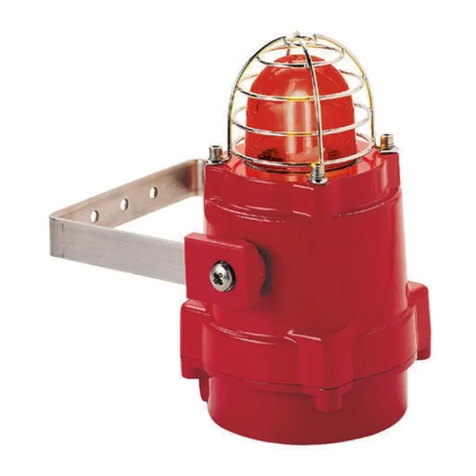
European Safety Systems Ltd. Impress House, Mansell Road, Acton, London W3 7QH
Document No. D199-00-401-IS
7) Installation Requirements
7.1. Installation Standards Compliance
Warning –High voltage may be
present, risk of electric shock.
DO NOT open when energised,
disconnect power before opening.
The beacon must only be installed by suitably qualified
personnel in accordance with the latest issues of the relevant
standards.
ATEX / IECEx installation standards:
EN60079-14 / IEC60079-14: Explosive atmospheres -
Electrical installations design, selection and erection.
EN60079-10-1 / IEC60079-10-1: Explosive atmospheres -
Classification of areas. Explosive gas atmospheres.
EN60079-10-2 / IEC60079-10-2: Explosive atmospheres -
Classification of areas. Explosive dust atmospheres.
NEC Class / Zone, CEC Class / Zone, and NEC & CEC Class
/ Division installation standards:
National Electrical Code, NFPA 70 or CSA 22.1 Canadian
Electrical Code, Part I, Safety Standard for Electrical
Installations, Section 32.
The installation of the units must also be in accordance with
any local codes that may apply and should only be carried out
by a competent electrical engineer who has the necessary
training.
7.2. Cable Selection and Connections
When selecting the cable size, consideration must be given to
the input current that each unit draws (see table 1), the number
of beacons on the line and the length of the cable runs. The
cable size selected must have the necessary capacity to
provide the input current to all of the beacons connected to the
line.
Electrical connections are to be made into the terminal blocks
on the PCBA, using solid wire 0.5-4mm2 / AWG 20-12 or
stranded wire, sizes 0.5-2.5mm2 / AWG 24-14. Wire insulation
needs to be stripped 8mm. Wires may be fitted securely with
crimped ferrules.
Figure 4: Wire Preparation.
Terminal screws need to be tightened down with a tightening
torque of 0.45 Nm / 5 Lb-in. A 6-way terminal blocks is provided
on the AC Beacon: 2-off Live, 2-off Neutral terminals and 2-off
Earth terminals in total. A 6-way terminal blocks is provided on
the DC Beacon: 2-off +ve, 2-off -ve terminals, 1-off S2 (Stage
2) and 1-off S3 (Stage 3).
Figure 5: STExB2 Entries and Terminal Block Location.
When connecting wires to the terminals great care should be
taken to dress the wires so that when the cover is inserted into
the chamber the wires do not exert excess pressure on the
terminal blocks. This is particularly important when using
cables with large cross-sectional areas such as 2.5mm².
Earthing
Internal earthing connections should be made to the Internal
Earth terminal in the base of the housing using a ring crimp
terminal to secure the earth conductor under the earth clamp.
The earth conductor should be at least equal in size and
rating to the incoming power conductors.
External earthing connections should be made to the M5 earth
stud, using a ring crimp terminal to secure the earth
conductor to the earth stud. The external earth conductor
should be at least 4mm2 in size.
7.3. Cable Glands, Blanking Elements & Adapters
For high ambient temperatures, the cable entry and the cable
branching point temperatures may exceed the following
temperatures:
•For ATEX / IECEx: 70ºC at entry or 80ºC at branching point.
•For NEC / CEC: 60ºC at entry or 60ºC at branching point.
Therefore, suitable heat resisting cables and cable glands
must be used, with a rated service temperature at least as
stated in the table below:
Max Ambient Temperature (ºC)
ATEX / IECEx / NEC / CEC Approved
LD2DC024
LD2AC115
LD2AC230
Table 2: Min. Ratings of Cables & Cable Glands.
